ChatGPT is part of my daily workflow for everything from simple definitions to self-diagnosis. When I switched to Grok for a week, I knew there’d be an adjustment—but I didn’t expect just how much I’d miss some of ChatGPT’s subtler strengths, or how easy it would be to let go of others.
What I Miss About ChatGPT
Even with Grok’s energy and engaging tone, there are moments I long for ChatGPT’s precision. It’s not only about features, it’s about the ease, the rhythm, the way it makes complex tasks feel a bit more manageable.
For each of the following images, ChatGPT’s response is shown on the left, and Grok’s response is shown on the right.
The Cleaner, More Controlled Responses
ChatGPT doesn’t waste words. Its tone is calm, clear, and to the point, even when I ask about something tricky. If I need help understanding how credit scores work or what goes into a good resume, ChatGPT explains it in a way that makes sense without going off-topic.
Grok, on the other hand, tends to lean into personality. That’s part of its charm, but it can also make responses feel a bit looser around the edges. You might get sarcasm when you don’t ask for it, or metaphors that are clever but slightly off-point. While Grok excels in creativity and energy, there are moments I miss ChatGPT’s restraint, especially in professional or technical settings where tone and clarity matter more than flair.
Staying on Track in Complex Conversations
Another aspect of ChatGPT that I miss is its ability to stay on track during long, multi-step conversations. When working through a complicated topic, ChatGPT seamlessly picks up where we left off, connecting ideas and filling in gaps without needing constant reminders. Even as the discussion shifts between topics, it maintains the thread, making the conversation feel more fluid and coherent.
With Grok, the flow can sometimes falter. While fast and creative, it can veer off course, especially in complex back-and-forths. I often find myself having to recap or clarify points, which interrupts the rhythm. ChatGPT, on the other hand, naturally builds on previous discussions, using context to drive the conversation forward without losing focus.
For long, intricate exchanges, ChatGPT’s ability to keep everything connected and moving smoothly is something I value. Grok’s spontaneity is great, but for staying focused over multiple prompts, ChatGPT is significantly more dependable.
More Reliable Source Attribution
One of ChatGPT’s strengths—especially in research or fact-heavy writing—is its ability to cite where information is coming from. Whether through in-line references or subtle context clues, it gives you a clearer sense of what’s widely accepted, what’s speculative, and what’s pulled from a specific source or school of thought. That doesn’t make it infallible, but it does make it easier to fact-check, dig deeper, or confidently cite an idea.
With Grok, sourcing feels a bit more hazy. Answers come quickly and with authority, but it’s not always clear whether they’re grounded in research, cultural consensus, or just the model’s own pattern generation. Because a lot of Grok’s responses pull from content on X (formerly Twitter), the information isn’t always as reliable or well-vetted as it might seem. ChatGPT may not always cite perfectly, but it typically points you in the right direction.
Structured Summaries
When I drop a dense document or messy transcript into ChatGPT, I can count on getting back a summary that feels thoughtful and organized. ChatGPT delivers tiered breakdowns, section headers, or bullet points that make parsing the content fast and painless, especially if prompted to do so. It will even create easy-to-read tables that portion out information in a structured, simple way, making complex material instantly more digestible.
Grok’s summaries, while fast and conversational, don’t always offer the same level of structure. They lean more casual, which sometimes means important details get buried or phrased too loosely. That matters when you’re moving quickly and need to extract insights at a glance. With ChatGPT, I spend less time reformatting and more time working with the information.
These Features Make Switching to Grok Easy
While ChatGPT has its strengths, it still carries habits that slow me down or feel unnecessarily rigid. In contrast, Grok fits more naturally into the way I like to work—faster, less rigorous, and with a bit more creative freedom.
The Formality
ChatGPT can sometimes come across as overly polished. Its default tone tends to be academic or even corporate. This works well in contexts such as preparing a business proposal, drafting technical documentation, or organizing detailed plans. However, it doesn’t always hit the mark when you’re trying to think creatively or approach a challenge from an unconventional angle.
Grok, on the other hand, feels more like collaborating with an intelligent, yet eccentric friend. It’s not afraid to be direct, quirky, or even a little offbeat. This flexibility and openness allow it to be far more effective in creative sessions, where you need a spark of inspiration rather than just a clean, well-structured response.
Over-Explaining Simple Topics
One aspect of ChatGPT’s behavior that has become tiresome for me is the tendency to over-explain basic concepts, as if I were encountering them for the first time. For instance, when asking about SEO, ChatGPT dedicates several paragraphs to explaining what a search engine is before even addressing the core topic. While this level of detail can be useful for beginners, it becomes frustrating for those already familiar with the fundamentals who are seeking a quicker and more direct response.
In contrast, Grok assumes a higher level of familiarity with the subject matter and avoids unnecessary explanations. It gets straight to the heart of the answer unless explicitly directed otherwise. This approach streamlines my workflow, especially when managing multiple prompts, as I don’t have to sift through yet another introductory explanation of “For context, search engine optimization (SEO) is…”
If you have existing knowledge, Grok prioritizes efficiency and respects your time.
Inconsistent Image Generation
DALL-E 3 | GPT-4o | Grok Aurora |
|---|---|---|
At the time of writing, ChatGPT’s image generation is split between GPT-4o and DALL-E 3, the latter of which OpenAI refers to as a legacy model. In March 2025, GPT-4o received a huge image update, massively increasing its image quality (along with the time to create an image!). However, herein lies the rub: ChatGPT’s free users only receive a few images before being pushed back to DALL-E 3, which is simply not as good. The difference between DALL-E 3 and GPT-4o is night and day.
ChatGPT’s free image generation, powered by DALL-E 3, still has significant limitations, especially with fine details like hands, faces, or symmetry. The results often end up distorted or surreal instead of realistic. Additionally, it tends to produce more animated or stylized images, which isn’t ideal when you need photorealism. I also found that at times, DALL-E 3 failed to produce anything, which was very frustrating.
Conversely, Grok’s free Aurora engine consistently delivers sharp, photorealistic images with more accuracy, especially when dealing with pop culture references or complex concepts. It’s more flexible and requires far fewer adjustments. At this point, I don’t miss the unpredictability of DALL-E 3. Aurora’s reliable, realistic results have made image generation much simpler, more enjoyable, and more accurate.
Avoiding Controversy
ChatGPT has a tendency to tread carefully around sensitive or controversial subjects, often erring on the side of caution. Whether it’s discussing political ideologies or the effects of robots taking over jobs, its responses are usually filled with numerous disclaimers or neutral statements.
While that caution can be valuable in certain settings, it also makes it harder to move quickly when you’re trying to unpack complex issues or build arguments that require a point of view. In contrast, Grok is more willing to engage directly. It doesn’t shy away from nuance, but it also doesn’t get bogged down in it. That confidence has made deeper, more challenging conversations feel more productive and honest.
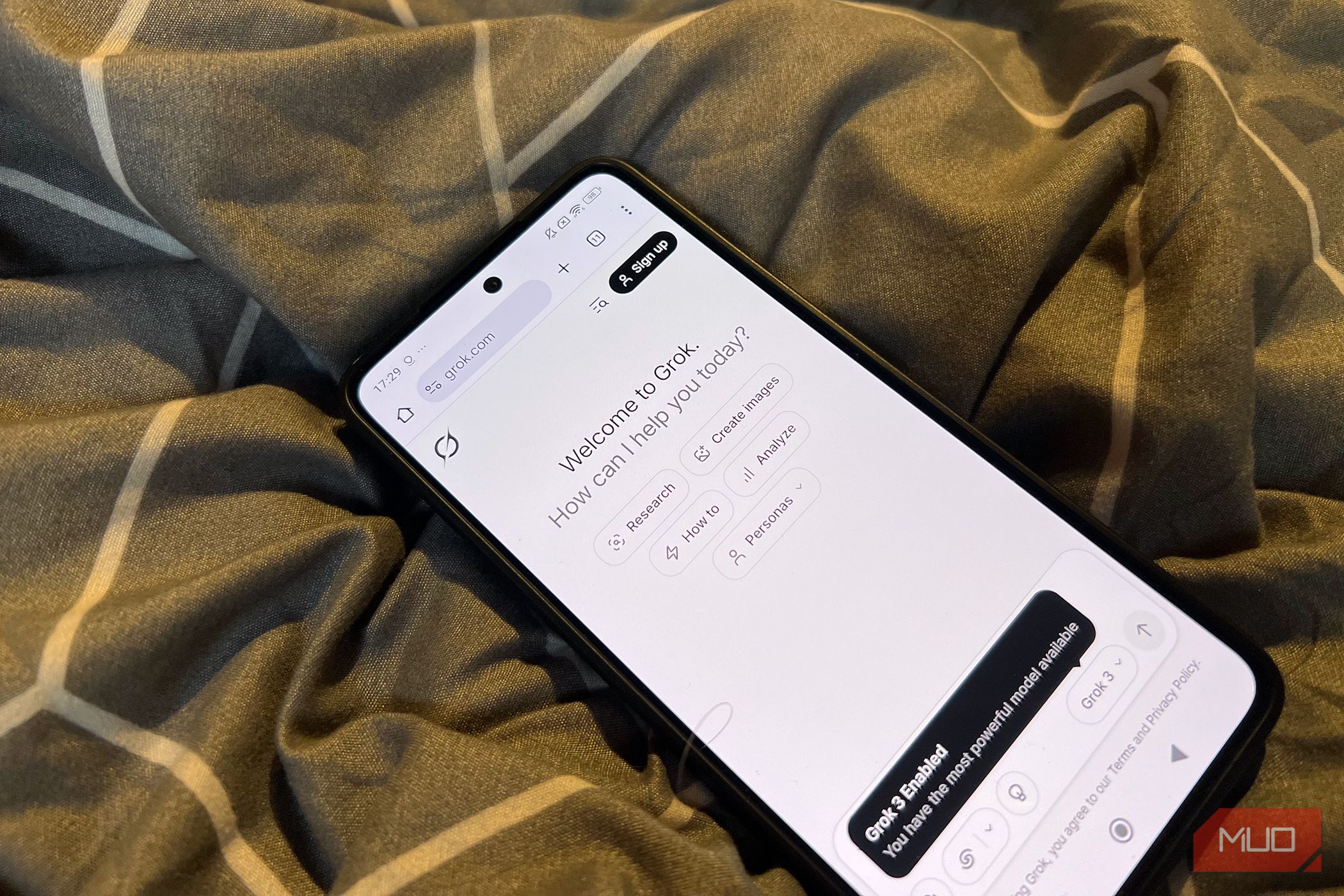
Related
Grok Just Upgraded to Rival ChatGPT’s Canvas
Grok’s finally got crayons.
Switching from ChatGPT to Grok hasn’t been seamless, but it’s been an enlightening experience. I miss the precision, memory, and structured support that ChatGPT provides. Grok is less polished, but it brings its own strengths with boldness and creative energy. Both models have their place—ChatGPT for its reliability and structure, Grok for its straightforwardness and edge. Choosing between the two is about finding the right fit for the task at hand.


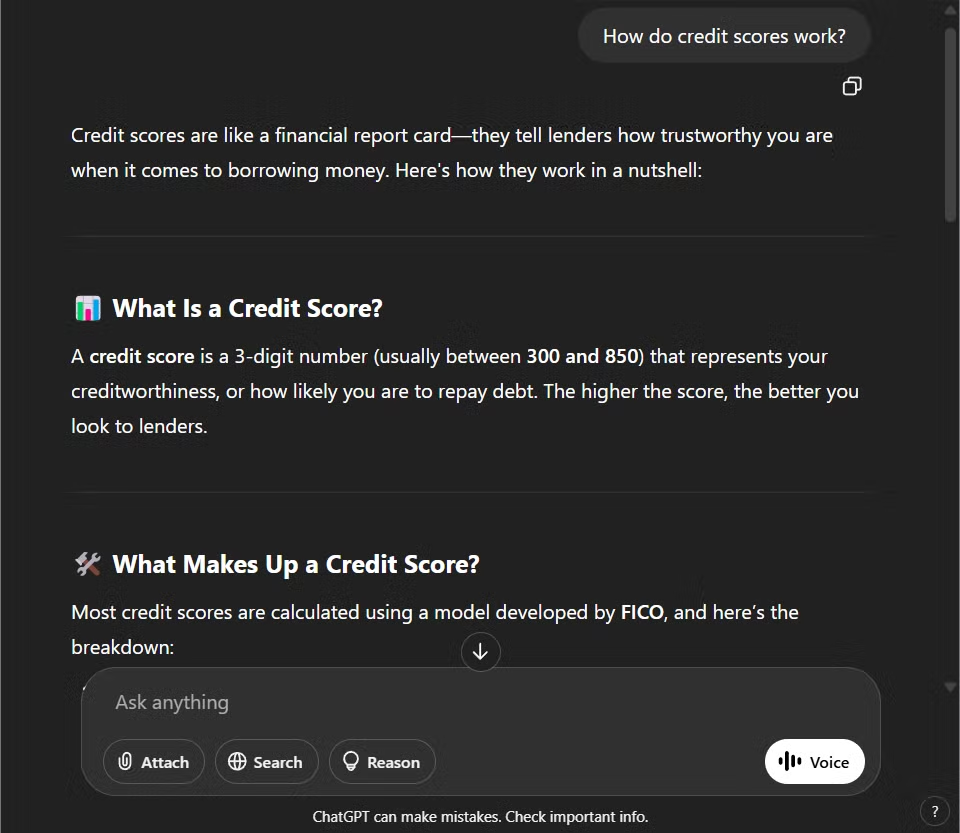
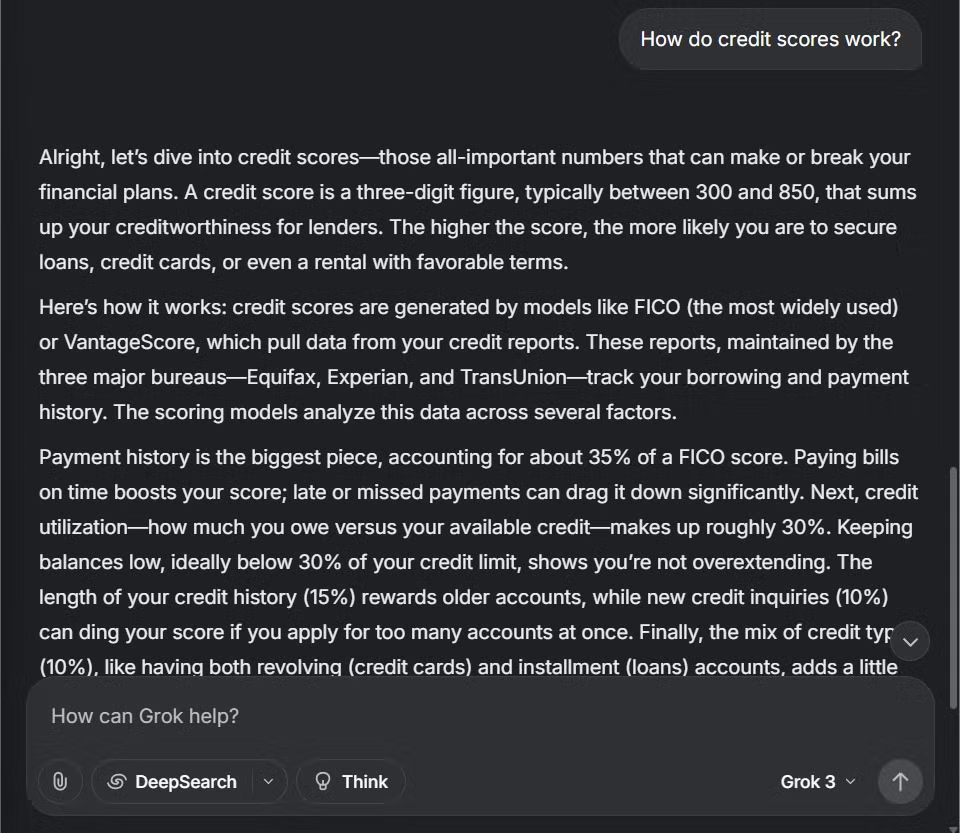

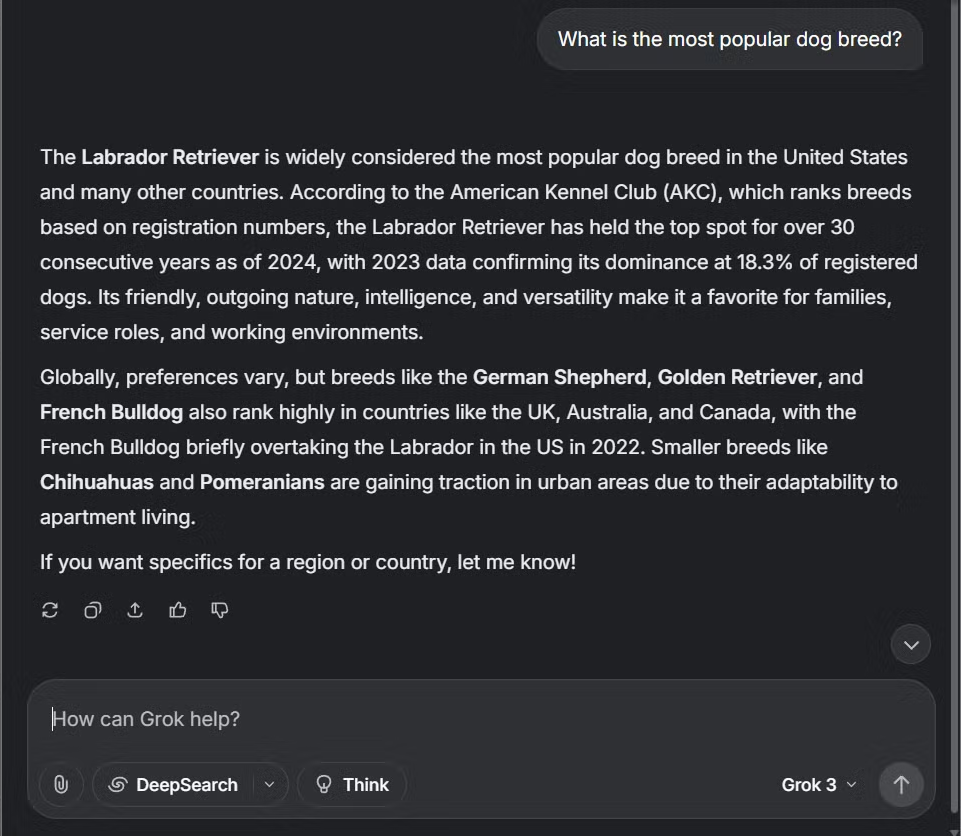

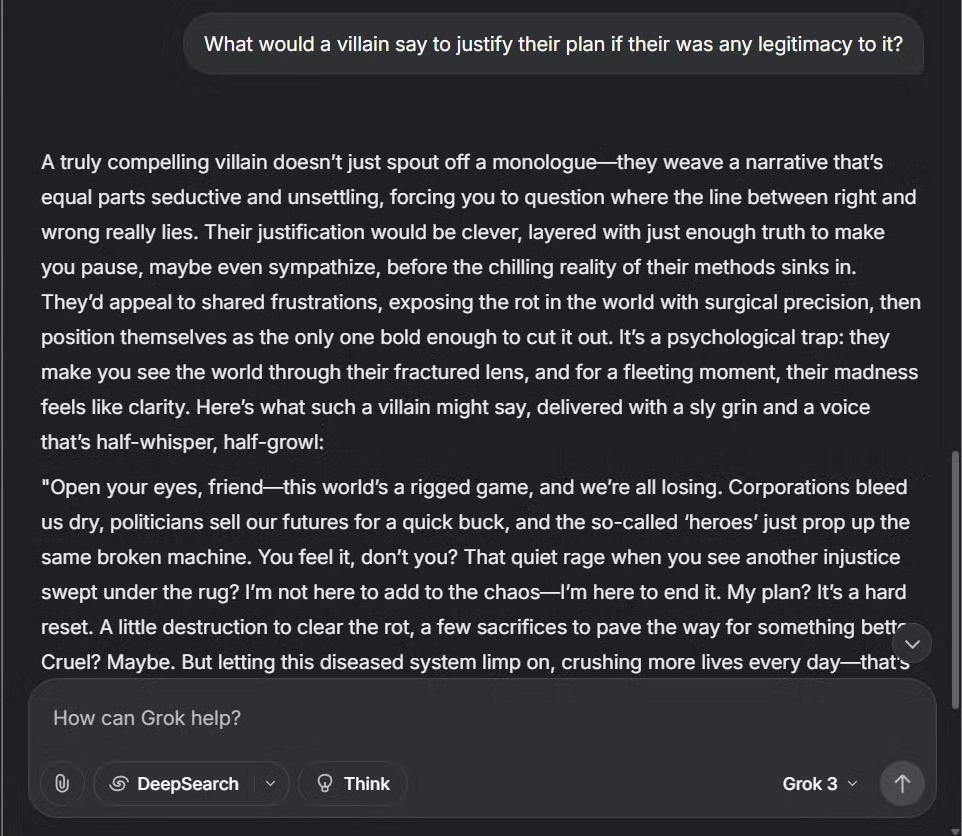
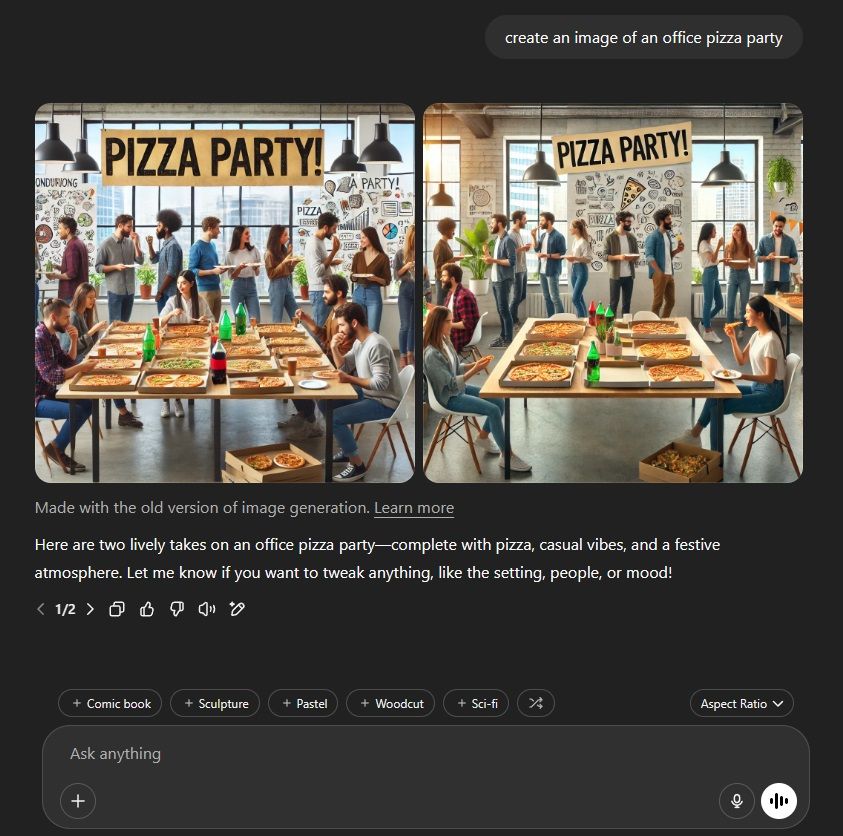
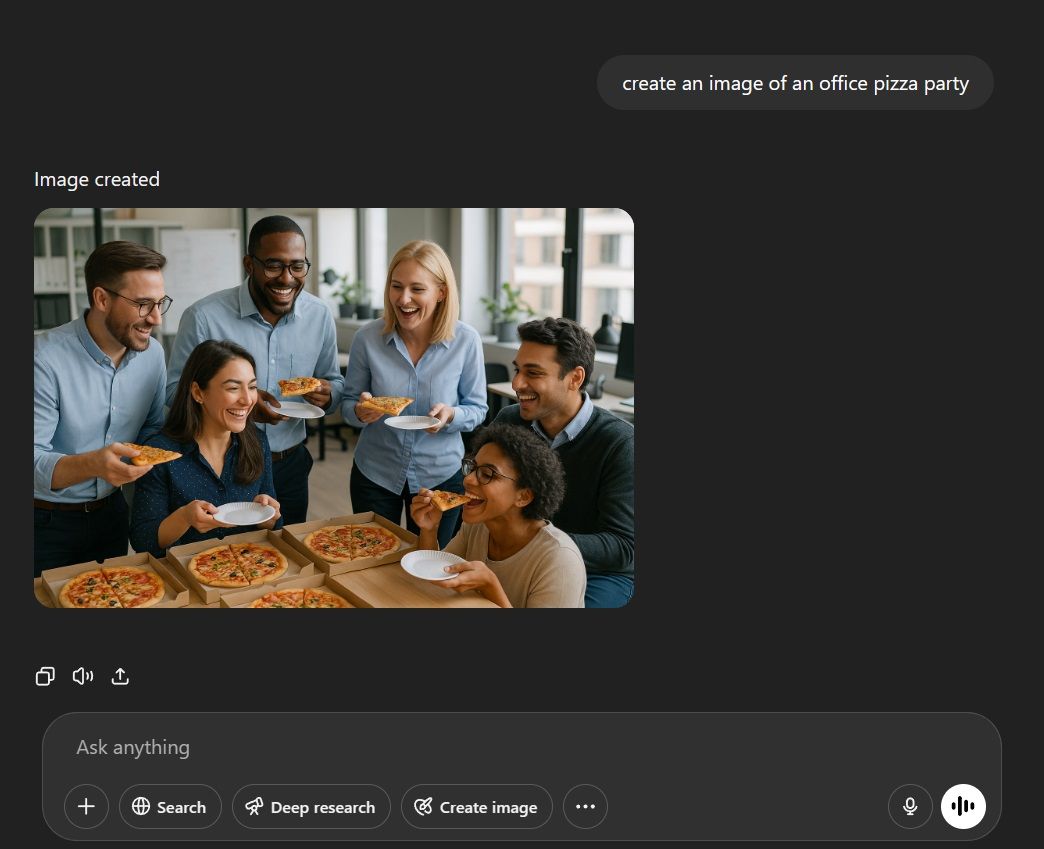
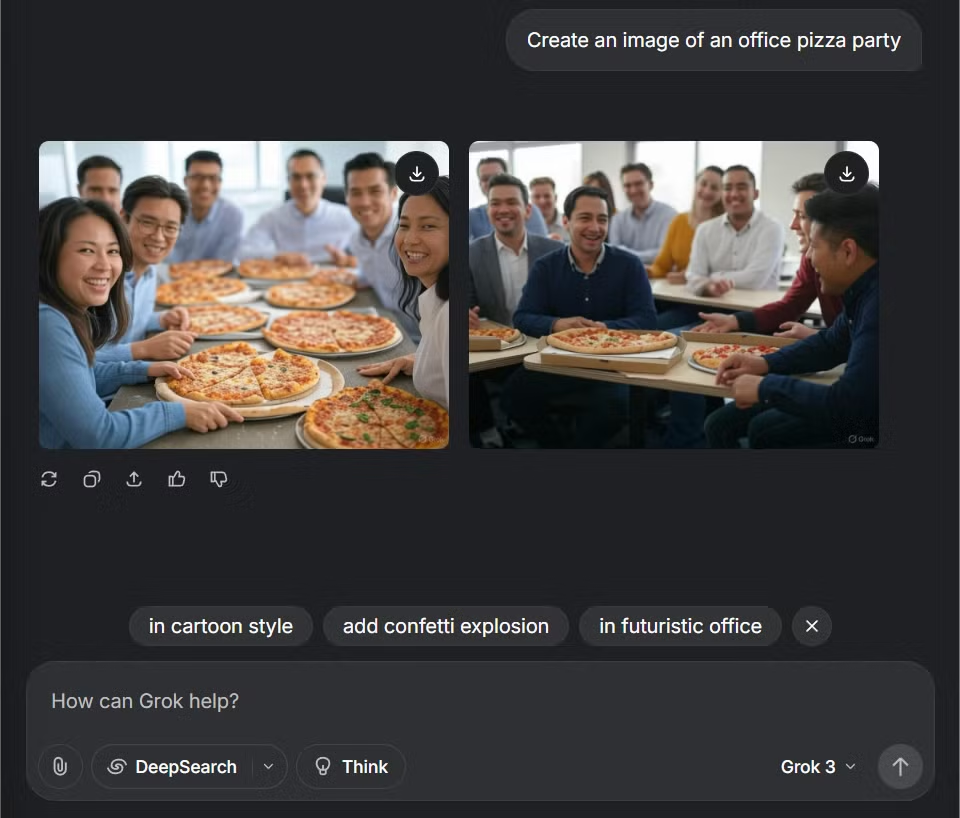





Leave a Comment
Your email address will not be published. Required fields are marked *